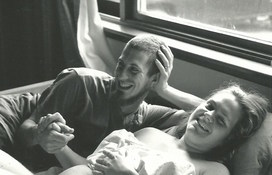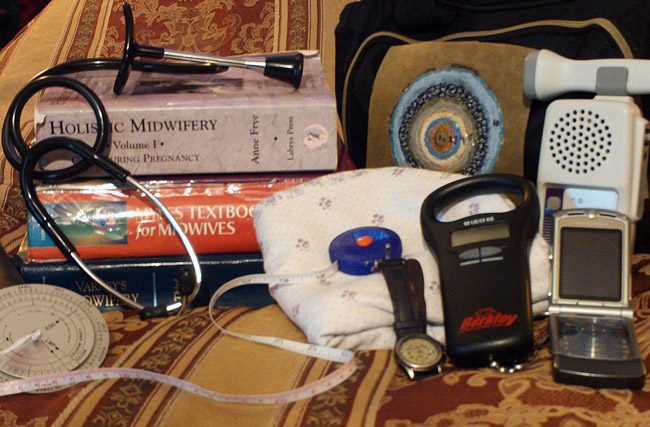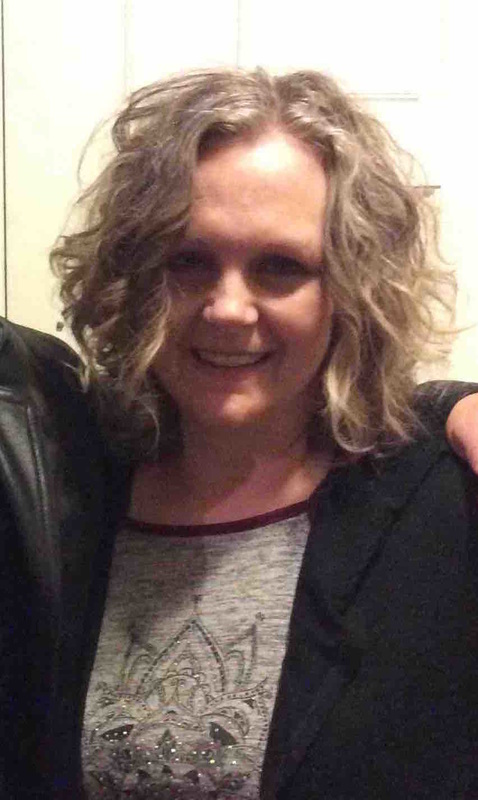 This week's blog post is courtesy of the Columbian Missourian's "From Readers" column. I was delighted to be invited to write a story and I tried to share some information about home birth and midwifery care interwoven with a personal story. Dawn Finney is a certified professional midwife and owner of Birthroot Midwifery in Columbia. “Why don’t you just have the baby in the hospital?” This was the question my father posed to me when I told him, 19 years ago, that I was planning to have my second baby at home. I was on the telephone nervously sharing with my parents my plans, and essentially, my hopes for this birth to be different than my first, which had been medically managed and hadn’t gone as I had imagined. Even so, I still appreciated the care I received from the certified nurse midwife who attended to me at the large university hospital in Iowa. I remember a moment, after the profundity of bringing my beautiful son into the world, in which I looked at my midwife and thought: “I need to do what she’s doing.” My path to midwifery was different than hers, though. I did attend nursing school, for a short time thinking I would pursue a master’s degree in nurse-midwifery and work in a hospital as most CNMs do. However, I was fortunate to meet a wonderfully skilled midwife who apprenticed me for four years, including a midwifery internship program in St. Petersburg, Russia. I earned my Certified Professional Midwifery credential, joining the ranks of the only type of maternal health care provider with training specific to the out-of-hospital birth environment. “But you can have your insurance pay for the birth in the hospital,” said my father. Ever practical, he voiced concern for the expense we would incur as a graduate-student family living on one income. Yet, this kind of maternity care offered quality and value that was worth paying out-of-pocket for: hour-long appointments with plenty of time to talk about my concerns and ask questions, care that respected my choices and treated me like an individual, privacy and comfort of being in my home instead of being at the mercy of policies and procedures decided by board rooms of lawyers, and postpartum care complete with breastfeeding support that came to my home when I needed it. The fee we paid our midwives was a fraction of the cost of a hospital birth for empowering care that felt priceless. In Missouri, there have been yearly efforts to license the legal practice of CPMs in the hopes that this would allow insurance reimbursement for midwifery care and planned home birth. If accomplished, it could save millions of dollars as it has in other states with licensed midwifery. “Call us when you go into labor so I know when to start worrying.” Now my mother was on the phone with me and I know that, in her own way, she was supporting my decision to birth at home. Worry. It’s a rare person who doesn’t feel some degree of this emotion when embarking on the journey to bring a baby into the world. Indeed, “what if something goes wrong” is a question that must be addressed whenever a couple comes to the complimentary interview appointment at which I discuss the option of midwifery care and home birth. If the couple does not bring this up, I do. The main risk of home birth is encountering a complication in which speedy access to a hospital is necessary. In reality, that kind of emergency is less common than our cultural fear about birth would have us believe. The most frequent reason to transport to a hospital is the opposite problem: a prolonged labor that has stalled and needs augmentation. A strong component of midwifery training is learning to recognize and manage any complications of birth and transporting to hospital when necessary. As I came to learn through my own birth experiences and my work as a midwife, a big driver of women choosing home birth is a less-than-satisfying birth experience in hospital with interventions that felt coerced or possibly unnecessary. Women having a first baby often choose home birth because they know they have a 33 percent chance of having a C-section just by giving birth in a hospital. Ultimately, I explain that no labor and birth is totally risk-free, no matter where a woman gives birth. What couples need to sort out is which set of risks do they want to choose? The good news is that for both hospital and home birth, the vast majority of births result in successful outcomes for mothers and babies. “Well, I guess that’s OK,” concluded my father. “I was born at home, too.” It turns out that a traditional midwife welcomed him and some of his siblings into the world. My daughter was born, not too long after this conversation, in the comfort of my own home under the care of skilled midwives. It has been my great honor to continue the legacy of providing midwifery care for planned home birth that was once common for all of our families. Link: Columbian Missourian "From Readers" Home birth legacy continues with local midwife
0 Comments
I occasionally get emails from young women who are interested in becoming a midwife. It’s great that the idea of midwifery seems to be spreading in the younger generation; perhaps becoming more of a modernized household word. There are some important considerations when thinking about one’s path to midwifery. In this article, I explore some of these ideas in a general way. This is by no means an exhaustive discussion. At the end, I’ll include links to resources that may help the aspiring midwife in her research.
First, what many who inquire about midwifery may not realize is that there are two educational tracts in the US for becoming a midwife. There are some interesting historical and political reasons why this is so, but that may be a topic for the future. Direct-entry midwifery is the term that represents the more traditional style of apprenticeship training. A student spends a number of years learning under the guidance of a more experienced midwife until she is ready to practice on her own. The student is responsible for obtaining the didactic portion of her education either through a program of study set out by her senior midwife or a long-distance educational program. Clinical experience in midwifery can also be gained by attending internship programs in the US or other countries. The requirements to be a CPM continue to evolve as the credential undergoes more standardization through agencies that accredit this route of education. The student has the option of testing for the national credential of Certified Professional Midwife which is administered by the North American Registry of Midwives. In twenty-six states, the CPM is recognized as the legal credential to practice out-of-hospital midwifery. The CPM is the only midwifery credential with training specific to the out-of-hospital birth environment. There are also brick-and-mortar midwifery schools, which may also offer a long-distance learning option with periodic clinical components for which the student must travel. For a student midwife wishing to earn a CPM credential, the school must meet the guidelines set by the Midwifery Education Accreditation Council (MEAC). Graduation from such a program fully prepares a student to take the NARM exam. CPMs who earned the credential under older guidelines must complete a bridge program by 2020 that will grant compliance with MEAC. Certified Nurse Midwife is the credential earned by students who have gone through formal education in nursing and have attained a master’s degree in nurse midwifery. CNMs are licensed and legal in every state although practice regulations differ from state to state making some states more difficult for the CNM to function in the full scope of her practice. Most CNMs work in hospital-based practices although some do have home birth practices. Having described the two routes for aspiring midwives, let me say that there is no easy way to become a midwife. Education and training in midwifery takes time, commitment, and hard work--as it should. I am a firm believer in rigorous midwifery training which includes a full scope of skills appropriate to the practice of midwifery. Your heart may make it very clear which route to take, but if you are weighing your options, I’d like to offer some thoughts for consideration. While the idea of training in the traditional apprenticeship model and being a home birth midwife may sound attractive, it can be difficult to find a midwife that will take you as an apprentice or be able to provide you the clinical practice opportunities if you are going through a MEAC approved school. If you find a midwife who can take you on, the volume of her practice needs to be high enough to give you the degree of experience or numbers you need to complete your training in the time allotted. If not, you may need to travel to a clinical site elsewhere to get the numbers and experience you need. Students earning a CPM credential must consider the laws of the state in which they wish to live. There are a handful of states in which the practice of midwifery is a felony and this can make it difficult to advertise or practice openly. A state with licensure for CPMs may make it possible for midwives to bill insurance companies; thus increasing the volume and financial stability of the practice. The nursing school route is generally more accessible and straightforward as a path to midwifery. CNMs are legal in all states, although again, you will want to consider the laws of the particular state in which you wish to live as some states restrict the practice of nurse-midwifery. Opportunities will also vary across the country as some cities have hospitals with thriving CNM practices, but many do not. Being a CNM (and a master’s degree level nurse at that) will offer more flexibility and employment opportunities to be able to earn a good income. I often encourage young women who contact me about midwifery to consider nursing for their educational route for those reasons. It’s possible, but a little less common, for CNMs to have a home birth practice. The laws of a particular state and the need to pay off student loans can be determining factors in this choice. Some CNMs get their CPM credential (or vice versa) to be able to have a home birth practice. Having both credentials is certainly one way to have all bases covered when it comes to the variability of midwifery practice environments. As a CPM, I love the ability I have to practice in a way that respects and honors the physiologic process of labor and birth. I am to able to be practical and responsive to the individually unfolding needs of the labor and birth of each woman. I value a model of care that didn’t need to be approved by a boardroom of men and that isn’t at the mercy of policies and procedures that were only designed with potential litigation in mind. And yet, I imagine that were I a CNM, I would have the ability to reach many more women with the midwifery model of care in populations that could benefit from it. Working in a structured environment with support of other professionals just down the hall, some kind of scheduled work life with a dependable income, health insurance, and a retirement plan are benefits I don’t get by being a self-employed CPM. In the meantime, there are other great things you can do as you research or prepare for your educational route. You can become a doula—this is a great way to learn about labor and birth, find out what goes into being a support person for a childbearing woman, get a feel for what being on-call is like, and gain some experience on the business side of being a birth worker. In my area, Nona has an excellent doula training program. Join your state midwifery organization. Get involved with the effort your state has to make or keep midwifery legal and viable. Here in Missouri, visit: Missouri Midwives Association. Below are additional resources: North American Registry of Midwives Midwives Alliance of North America Midwifery Education Accreditation Council American College of Nurse Midwives |
Midwife's musings...A midwife must possess a lady's hand, a hawk's eye, and a lion's heart. ~Aristotle Archives
December 2017
Categories |
Proudly powered by Weebly


 RSS Feed
RSS Feed